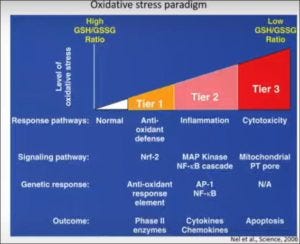Clip via Sarah Westall
Follow: Twitter | Instagram | Telegram | Gab | Facebook
Truth Lives Here: Rumble | Rokfin | Odysee | Brighteon | Bitchute | YouTube
Websites: MaryamHenein.com | HoneyColony.com
Graphene Obsessions & Omissions
Graphene is a superconductor that allows people to emit and receive signals. GO is the most versatile and researched material in history and huge quantities are now being cheaply produced worldwide. Reports also state that GO is being added to the water supply and in meat.
Now if you only read that measly study with 14 people that I cited in Part 1, you would think that G.O is safe. But that’s just scratching the surface. When explored for in vivo applications in animals, graphene oxide, which passes through the blood-brain barrier, induces cell apoptosis and lung granuloma formation and can cause liver and kidney damage.
Graphene oxide accumulated in the lungs can have devastating impacts. Graphene nanomaterial aerosols that are inhaled can create substantial deposition in the respiratory tract. They can easily penetrate through the tracheobronchial airways and then transit down to the lower lung airways, resulting in the subsequent formation of granulomas, lung fibrosis, and adverse health effects on exposed persons.
Granulomas frequently occur in the lungs but can occur in other parts of the body and head as well. They seem to be a defense mechanism that triggers the body to “wall off” foreign invaders such as bacteria or fungi to keep them from spreading.
Graphene oxide (GO) can also trigger thrombi and blood coagulation. It also hurts the immune system.
Interestingly, GO amplifies the phytotoxicity of arsenic in wheat.
According to a paper in Nature, “In addition to the amplification of uptake, ‘‘indirect’’ nanotoxicity can involve multiple phenomena, such as toxic amplification of coexistent toxicants via the “regulation of transformation, metabolism, genes, proteins, and enzymes. Arsenic is a ubiquitous toxic element and shows the potential to pose a great risk to animal and human health.”
Isn’t this convenient when you consider the prevalence of heavy metals in our environment? These results all indicate to amplification of toxins or pollutants by nanomaterials. Herein, this phenomenon is defined as ‘‘indirect’’ nanotoxicity.
Graphene oxide can also induce in vitro and in vivo mutagenesis, “thus extra consideration is required for its biomedical applications.” Mutagenesis is a process by which the genetic information of an organism is changed by the production of a mutation.
Results also showed that GO interferes with DNA replication and induces mutagenesis at the molecular level. GO begins to show toxicity against erythrocytes, fibroblasts, and PC12 cells. Aside from cell apoptosis, it can cause hemolysis and oxidative stress.
Incidentally, surface chemical modification, such as PEGylation, improves the biocompatibility of GO. However, the chemical bonds linking GO with modified polymers can be broken down in vivo, thus surface-modified GO can also induce in vivo toxicity.
Aren’t there PEGs in the jab? Yup, that’s in the witch’s brew.
Dosage tests on graphene oxide and its effects on human cells have been conducted. Specifically, to see how much graphene oxide they can put in a human body before it becomes toxic. The chart of measurement used shows three tiers: an antioxidant reaction, an inflammatory reaction, and a cytotoxicity reaction (sorry it’s fuzzy).
To recap when graphene oxide gets into the human body, it can create thromboses, cause blood clots, disrupt the immune system, trigger a cytokine storm, instigate pneumonia, create a metallic taste in the mouth, cause inflammation of the mucous membranes, produce a loss in the sense of taste and smell, and blocks detoxification in the body by blocking glutathione, which your liver needs to detox.
The notion that the FDA (or any regulatory agent) legitimately permits the inclusion of this known poison for mass consumption is absurd.
But now, sick spin doctors who worship scientism have repositioned graphene as being good for you. That is the name of the game with pharmaceia, which means sorcery in Greek.
A paper titled Nanotoxicity of Graphene and Graphene Oxide states that “more detailed studies are needed that aim to investigate the toxicity of graphene-based materials to properly associate the biological phenomenon with their chemical, structural, and morphological variations that result from several synthetic and processing possibilities.”
Now that we’ve established that graphene oxide is poisonous, let’s examine why they would inject this into the human body.
A Toxic ‘Wonder Material’
Graphene’s carbon atoms form a hexagonal pattern. Graphene is a great conductor of electricity and it can host a magnetic field. It also has a direct effect on human neurons. Can it be activated by frequencies and connect you to The Internet of Things? In the future, will humans be controlled from the outside with a magnetic field apparatus?
A June 2016 paper titled Human-Like Sensing and Reflexes of Graphene-Based Films establishes that “high carrier mobility and low sheet resistance ensure graphene a rapid transmission of electrical signals, and thus…





